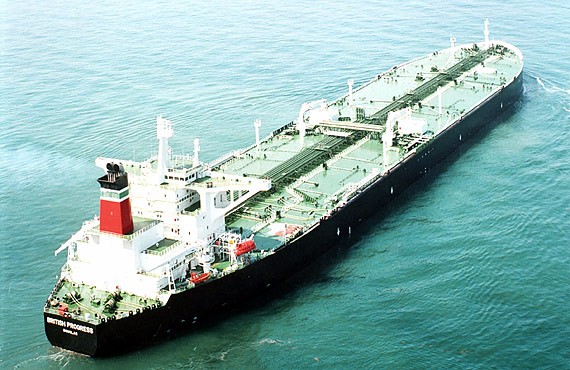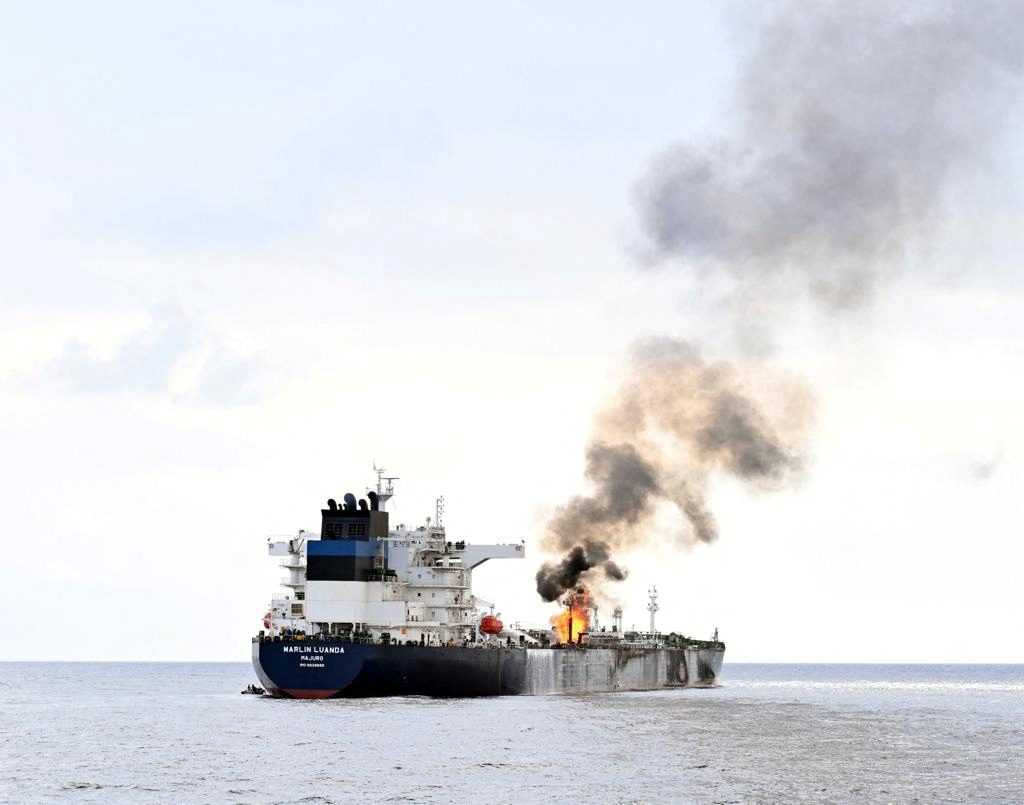British Progress, Image: BP
(Bloomberg) — Losses widened for the largest oil tankers hauling Middle East crude to Asia, the industry’s busiest trade route, as a surplus of vessels increased amid a dearth of cargoes.
Very large crude carriers are losing $5,661 daily on the benchmark Saudi Arabia-to-Japan voyage, more than yesterday’s $5,199, figures from the Baltic Exchange in London showed. Returns yesterday were the lowest for a month’s final session since August, the month they reached minus $7,850, the lowest level for data going back to July 2008 compiled by Bloomberg.
There are 102 tankers available in the Persian Gulf over the next 30 days, according to Kevin Sy, a Singapore-based freight-derivatives broker at Marex Spectron Group. That compared with 92 ships on Jan. 3, Marex Spectron data showed. Saudi Arabia, the world’s largest crude exporter, cut daily production by 300,000 barrels in December, Oslo-based investment bank RS Platou Markets AS said Jan. 28 in an e-mailed report that cited International Energy Agency data.
“Another week of pain beckons,” London-based shipbroker E.A. Gibson said in an e-mailed report today. “VLCC owners attempted a fight back, but ultimately failed miserably.”
VLCCs began losing money on the benchmark voyage on Jan. 24, the exchange’s assessments showed. The ships earned money in only four sessions in the third quarter on the journey. The combined carrying capacity of the world VLCC fleet will expand 5.3 percent this year, below demand growth of 5.9 percent, Clarkson data showed.
Lower Speeds
The exchange’s assessments fail to account for owners’ efforts to improve returns by securing cargoes for a voyage’s return leg or by reducing speed to burn less fuel, known as slow-steaming. The price of fuel, or bunkers, the industry’s biggest expense, rose 0.3 percent to $639.83 a metric ton, the highest level since Oct. 22, figures compiled by Bloomberg from 25 ports showed. Prices gained the most since August this week.
Charter rates for VLCCs on the route added 0.3 percent to 31.31 Worldscale points, the exchange’s figures showed. The gain was the third in a row.
The Worldscale system is a method for pricing oil cargoes on thousands of trade routes. Each individual voyage’s flat rate, expressed in dollars a ton, is set once a year. Today’s level means hire costs on the benchmark route are 31.31 percent of the nominal Worldscale rate for that voyage.
The Baltic Dirty Tanker Index, a broader measure of oil- shipping costs that includes vessels smaller than VLCCs, declined 0.2 percent to 635, according to the exchange.
– Rob Sheridan, Copyright 2013 Bloomberg.
Unlock Exclusive Insights Today!
Join the gCaptain Club for curated content, insider opinions, and vibrant community discussions.

 Join The Club
Join The Club













